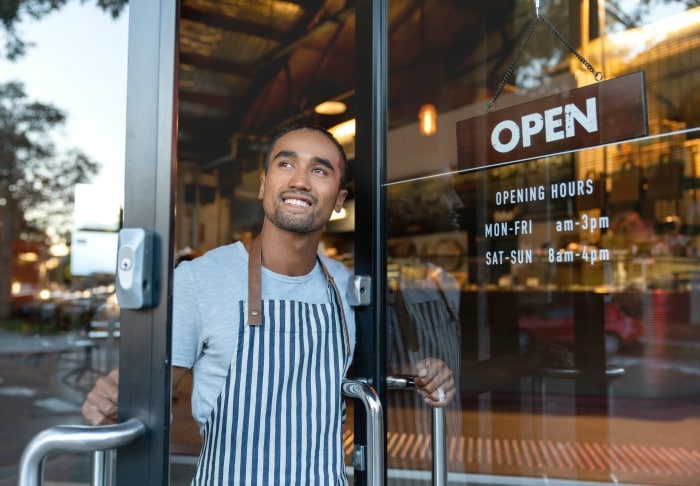As the world reopens, retailers are focused on safely welcoming back customers and resetting operations. Many brands, including digital pure plays, are eyeing new customer journeys and new business models.
For example, Fabletics and Amazon are taking advantage of retail real estate vacancies and launching or expanding their physical presence. To the surprise of many pundits, physical store expansion plans continue to outpace closures. According to U.S. store tracking by Coresight Research, national retailers have announced 3,199 store openings and 2,548 closures year-to date.
The evolution of e-commerce brands to omnichannel retailers has been measured. Many are new to store operations and the realities of in-person experiential retail. This will demand they form new capabilities and competencies that meet the customer wherever they are and on their terms.
Let’s explore several best practices for success as retailers adjust to the real world.
Understanding consumer expectations
Shopping pathways and buying psychology vary dramatically by customer journey. For many, shopping is a social connection and an interpersonal experience. At the same time, online shopping may offer more convenience; discovering products while browsing is a key factor that brings consumers in store.
Before the pandemic in the 2019 Oracle Retail consumer study, 36% of consumers ranked discovery as a space to experiment and try new products and a top priority on their shopping journey. Also, as state restrictions lift, consumers return to stores, and brick-and-mortars need to have fully stocked inventory ready for the influx. If retailers can’t provide, shoppers will take their wallets elsewhere. According to a 2021 Oracle Retail study, 34% of respondents said out-of-stock merchandise topped their list for a bad shopping experience, 33% said they weren’t willing to wait for an item to be back in stock before trying another brand, and 27% will go to another retailer.
Even as they return to stores, shoppers are still focused on health and safety. Today’s consumers demand a clean and healthy environment while on their shopping journeys. This isn’t an issue that e-commerce companies will have encountered online; however, this will need to be a top priority for brands looking to pivot. According to the same 2021 Oracle study, 80% of shoppers are ready to shop in a retail store as long as safety precautions are in place (e.g., wearing a mask, cleaning procedures, etc.), with 28% of shoppers reporting a lack of social distancing/unclean environment would result in a bad shopping experience.
Incorporating retail technology
As digital brands are extending their operations to the main street, they bring a wealth of technology and insights. e-commerce offers brands countless ways to personalize the shopping experience and provide convenience to consumers. Direct to consumer brands and pureplay retailers will need to figure out how to translate these strategies to real life in the offline world. Digital brands looking to pivot will need to reimagine how their online strategy will work in-store. Utilizing the right technology is vital, and choosing a robust POS and retail platform is integral to successful in-store operations. It is not as simple as adding a cash drawer to your website and hoping it all goes well.
No matter the channel, customers want convenience in their shopping experience. As consumers will far outnumber store associates, retailers looking to pivot will need to explore innovative options, such as self-checkout, BOPIS, pay-by-link, pay-by-QR code, and other tech-forward ways getting customers out the door.
Instead of spikes in web traffic, new brick-and-mortar retailers will need to anticipate the ebbs and flows of in-store demand. These retailers should consider demand forecasting technology to predict everyday traffic and get ahead of the busy end-of-year holiday season. They will need a system that utilizes next-generation retail science and exception-driven processes to predict demand accurately.
Upgrading with staff training
As new brick-and-mortar stores open, retailers will naturally need to hire and train new staff to keep up. However, for the road ahead, staff training will need to go beyond the basics and be integral to physical stores’ success. As vaccinations usher in return to normalcy for retail, store associates who came aboard during the pandemic will need to adapt to growing foot traffic and the associated demands.
Customers will want to know where every product is, what discounts are available, if more stock is in the back, and which check-out lane is the quickest. They’ll expect the associate to handle every inquiry and meet every demand quickly. For example, 44% of consumers ranked unhelpful staff as defining a bad shopping experience, which shows how imperative knowledgeable staff is, per the 2021 study.
Store associates will need to be well-equipped to handle all expectations and questions that come their way. Retailers moving from online to the real world can help bridge the gap by integrating mobile devices or tablets for associates to use, putting information at their fingertips. These devices can help staff locate items and inventory, highlight customer profiles and suggestions to help associates provide better service, and can even serve as the point of sale for check out. Training staff for this experience will be imperative so associates can make the most of in-store technologies and leverage them to provide an excellent customer service experience.
Breaking into brick-and-mortar can be an exciting next step for e-commerce brands, but it requires proper planning and preparation. Customers, and their needs, are different in each arena, and retailers will need to understand how to cater to the two. As digital retailers step into the real world, ultimately, they will need to anticipate the behaviors and demands of in-store consumers, incorporate technology to offer a more seamless experience, and train their staff adequately to make the entire customer journey worthwhile. With the world moving towards reopening, it’s time to step into (or back into) the real world and prepare for the future of retail.





